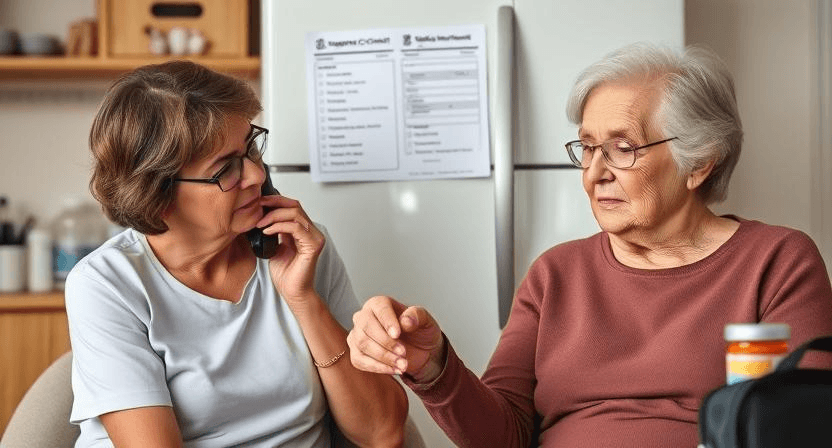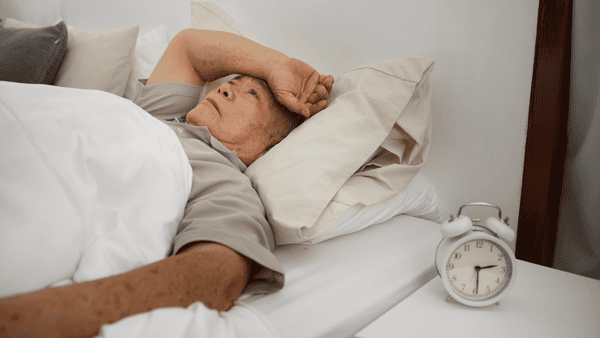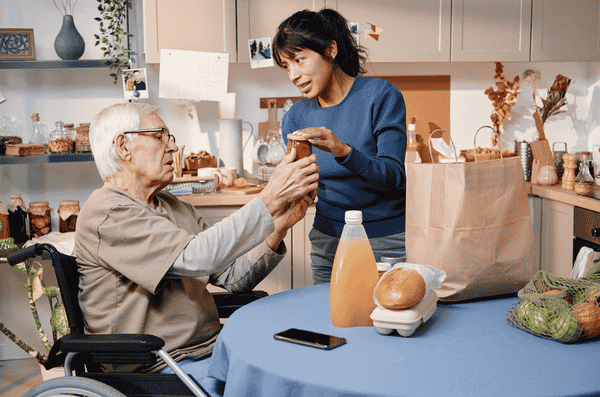The call came at 2:37 AM. I fumbled for my phone in the darkness, heart already racing before I’d even answered. It was Mrs. Reynolds from next door. “Something’s wrong with Dad,” she said, her voice tight with worry. “He can’t get up and he’s not making sense when he talks.”
As a caregiver for her 83-year-old father for three years, I thought I was prepared for anything. But in that moment, with adrenaline coursing through my veins and my mind racing through possibilities—stroke? heart attack? severe fall?—I realized how easily panic can override preparation.
“I’ll be right there,” I told her, already searching for my shoes and car keys. “Have you called 911?”
There was a pause. “I… I wasn’t sure if I should.”
This scenario plays out thousands of times across Canada every day. Caregivers—whether family members or professionals—suddenly faced with a medical emergency involving the seniors in their care. How we respond in those critical first minutes can make all the difference in outcomes and recovery.
Why Emergency Planning Matters for Caregivers
As an in-home caregiver, you’re often the first line of defense when a senior’s health suddenly deteriorates. Whether it’s a fall resulting in injury, signs of a stroke, symptoms of a heart attack, or another acute condition, your ability to act quickly and calmly is crucial to ensuring their safety and best possible outcome.
“In emergency medicine, we talk about the ‘golden hour’—that critical time when intervention can most significantly impact survival and recovery,” says Dr. Elaine Wong, emergency physician at Vancouver General Hospital. “For seniors especially, having a caregiver who knows what to do in those first minutes can be lifesaving.”
This comprehensive guide combines recommendations from the Comforhome Quick Guide with Canadian resources like Get Prepared to give caregivers a framework for emergency preparation and response. By taking time now to prepare, you’ll be able to act decisively when seconds count.
Core Emergency Plan Steps: Your Foundation for Crisis Response
Creating an effective emergency plan doesn’t need to be complicated, but it must be thorough. Here are the essential components every caregiver should have in place:
Collect Key Contacts
“During my father’s stroke, I couldn’t remember his doctor’s number to save my life,” recalls Tonya McLean, a family caregiver from Halifax. “The stress just wiped my memory clean. Thank goodness I had it posted on the refrigerator.”
Your emergency contact list should include:
- The senior’s primary care physician (name and direct number)
- Pharmacy contact information
- Emergency services (911)
- Family members in order of priority
- Neighbors or nearby friends who could assist
- Poison Control (1-800-567-8911)
- Local health line (811 in most provinces)
Place this list prominently on the refrigerator where emergency personnel will see it, and store a digital version in your phone. Consider laminating the physical copy to protect it from damage.
Note Patient Details
Medical professionals need accurate information quickly in an emergency. Prepare a one-page medical information sheet that includes:
- Full name and date of birth
- Health card number and location of the physical card
- Complete list of current medications with dosages and times taken
- Known allergies (especially medication allergies)
- Existing medical conditions (diabetes, heart disease, dementia, etc.)
- Recent hospitalizations or procedures
- Primary language if not English/French
- Height and weight (important for medication dosing)
- COVID-19 vaccination status
- DNR (Do Not Resuscitate) order status, if applicable
- Location of advance directives
“When my mother was rushed to the hospital after a fall, the paramedics told me my prepared info sheet saved them at least 10 minutes of questions during transport,” says Michel Tremblay, whose 79-year-old mother has Alzheimer’s. “That’s 10 more minutes they could focus on treating her instead.”
Update Regularly
Medical information changes frequently for many seniors. Set a calendar reminder to review your emergency information:
- Every three months at minimum
- Immediately after any medication change
- Following any new diagnosis
- After hospital discharge
- When there are changes to emergency contacts
Many caregivers find it helpful to schedule this review during medication refill time, creating a natural checkpoint in their routine.
Share the Plan
An emergency plan only works if everyone knows about it. Make sure to:
- Walk through the plan with family members who visit regularly
- Orient any relief caregivers to the emergency information
- Consider creating a simplified version for the senior themselves if appropriate
- Email digital copies to family members who may need to coordinate care from a distance
- Inform neighbors who might be called upon in an emergency
“My sister and I care for our mother on different days,” explains Jaspreet Kaur from Surrey, BC. “We created a shared digital document with all her information that we both keep updated. When Mom had her emergency, we were completely in sync with the doctors despite being hours apart.”
Practice It
In a crisis, even simple tasks become challenging under stress. Regular practice can help cement emergency procedures:
- Time yourself finding the medication list
- Practice the script for calling 911 (address, situation, senior’s condition)
- Rehearse how you would direct emergency personnel to the home
- Walk through what items you would bring to the hospital
- Practice how to quickly gather medications for hospital transport
Even simulating these scenarios for just 5-10 minutes every few months can make a tremendous difference in your confidence and effectiveness during an actual emergency.
Practical Additions for Canadian In-Home Caregivers
Beyond the core planning elements, there are specific considerations for Canadian caregivers that can enhance your emergency response capabilities.
Recognizing Health Emergencies
Quick recognition of serious symptoms can save precious minutes in an emergency. Familiarize yourself with these warning signs:
Stroke (Remember FAST)
- Face: facial drooping on one side
- Arms: weakness or numbness in one arm
- Speech: slurred or confused speech
- Time: note when symptoms started and call 911 immediately
Heart Attack
- Chest pain or pressure (may radiate to arm, jaw, or back)
- Shortness of breath
- Cold sweats, nausea, or lightheadedness
- Unusual fatigue
Serious Fall
- Inability to get up
- Visible deformity of limb
- Loss of consciousness even briefly
- Head injury with confusion or vomiting
Diabetic Emergency
- Extreme confusion or agitation
- Cold, clammy skin
- Loss of consciousness
- Seizures
The Canadian Red Cross First Aid App provides free, detailed guidance on recognizing and responding to these and other emergencies. It’s available in both official languages and works offline—a valuable resource for any caregiver’s smartphone.
Staying Calm: The First Step in Any Emergency
When someone in your care is experiencing a medical crisis, your own composure becomes a critical factor in providing effective help.
“Take three deep breaths before you do anything,” advises Samantha Peterson, a long-term care nurse and family caregiver trainer. “Those few seconds won’t hurt the situation, but they’ll help clear your mind to make better decisions.”
Additional strategies for maintaining composure include:
- Speaking out loud to yourself with simple instructions
- Using a calm, reassuring voice when speaking to the senior
- Focusing on one task at a time rather than the entire situation
- Reminding yourself that help is coming
Immediate Response: Taking Action When Minutes Matter
When faced with a potential emergency:
Call 911 Without Hesitation for:
- Unconsciousness or altered mental status
- Difficulty breathing or shortness of breath
- Chest pain or pressure
- Severe bleeding
- Signs of stroke
- Serious falls, especially with head injury
- Seizures
When calling 911, speak clearly and provide:
- The exact address, including apartment number and entrance instructions
- A callback number
- The senior’s condition and any changes you observe
- Answer all dispatcher questions—they’re gathering information for the responders
“Many people don’t realize that 911 dispatchers in Canada are trained to provide emergency instructions over the phone,” explains former dispatcher Liam O’Connor. “Stay on the line and follow their guidance until help arrives. They can talk you through CPR, controlling bleeding, or positioning someone who’s unconscious.”
Provide First Aid If Trained If you have first aid training, use those skills while waiting for emergency services:
- For someone unconscious and not breathing normally, begin CPR
- For falls, avoid moving the person unless they’re in immediate danger
- For suspected stroke, keep them comfortable, noting the time symptoms began
- For diabetic emergencies, if the person is conscious and able to swallow, administer glucose gel or juice
St. John Ambulance Canada offers first aid and CPR training courses specifically focused on senior care emergencies. Even a basic first aid course can provide invaluable skills for caregivers.
Medical Essentials: Being Prepared for Transport
If the senior needs to be transported to hospital:
Medication Management
- Keep a 7-day supply of all medications in their original containers
- Use a daily pill organizer that can be grabbed quickly
- Know which medications are absolutely critical (insulin, heart medications, seizure medications) versus those that can be missed for a day
- Ask the doctor about emergency medication protocols for specific conditions
Ready-to-Go Documentation
- Photocopy of health card (front and back)
- List of pharmacy details for medication verification
- Contact information for primary care provider
- Recent specialist reports if relevant
- Compact version of medical history
“After my husband’s first emergency, I created what I call a ‘hospital go-bag’,” shares Evelyn Richardson of Thunder Bay. “It has copies of all his important medical information, a change of clothes, his favorite blanket, reading glasses, and a portable charger. Now when we need to rush to the hospital, I just grab that bag and go.”
Managing Dementia During Emergencies
Seniors with Alzheimer’s or other dementias present unique challenges during emergencies. They may become frightened by unfamiliar faces, resist help, or become more confused under stress.
Reducing Agitation
- Maintain a calm, quiet environment
- Use simple, direct language
- Bring a familiar object (photo, blanket) to provide comfort
- Stay within their line of sight
- Touch gently on the arm or shoulder if appropriate
- Explain what’s happening in short, simple sentences
Preventing Wandering
- Ensure doors are secure while waiting for help
- Keep the senior engaged with a simple task or conversation
- Have identification ready, including any Medic Alert Safely Home bracelet information
- Alert emergency responders about wandering tendencies
“When my mother with dementia fell and broke her hip, she became combative with the paramedics because she was scared,” recalls Wei Chen, a family caregiver from Edmonton. “I brought her favorite family photo album, which immediately calmed her down. Now it’s always part of our emergency kit.”
Handover to Paramedics: Ensuring a Smooth Transition
When emergency medical services arrive:
Provide Essential Information
- Hand over your prepared medical information sheet
- Highlight any recent changes in condition or medications
- Share details about the current emergency (when it started, what you observed, what changed)
- Inform them about any relevant advance directives
- Point out any MedicAlert Canada bracelet or identification
Coordinate Family Communication
- Designate one person to contact family members
- Provide clear information about which hospital the senior is being transported to
- Share your location and next steps
- Avoid overwhelming the senior with too many people at once
Canadian Resources for Emergency Preparedness
Canada offers several valuable resources specifically designed to help caregivers prepare for emergencies:
Get Prepared (www.getprepared.gc.ca) The Government of Canada’s emergency preparedness site includes specific guidance for caregivers and those with medical needs, including downloadable emergency plan templates.
Canadian Red Cross First Aid App This free smartphone application provides step-by-step guidance for common emergencies, works offline, and includes Canadian emergency numbers and protocols.
MedicAlert Canada Beyond the familiar bracelets, MedicAlert offers an emergency information service that can provide detailed medical information to emergency responders nationwide.
Provincial Health Lines Most provinces offer a non-emergency health line (usually 811) for medical advice when the situation is concerning but not immediately life-threatening.
St. John Ambulance Canada Offers caregiving-specific first aid training with practical skills for senior emergency scenarios.
Quick Tips for Emergency Readiness
Small habits can make a big difference in emergency situations:
Stay Connected
- Keep your phone charged at all times
- Know where the nearest landline is if available
- Consider a medical alert system with fall detection for seniors living alone
Location Awareness
- Ensure your address is clearly visible from the street
- If in an apartment or complex, note the best entrance for emergency vehicles
- Know your exact location (including cross streets) when in public
Practice Speed Tests
- Time yourself locating the medical information sheet
- Practice packing any needed items for hospital visits
- Rehearse giving clear directions to your location
“We made a game of it with Mom,” says Robert Lafleur, who cares for his mother in Quebec City. “Once a month, I’d say ’emergency drill’ and time how quickly I could find her medication list and health card. It seemed silly until the night she had breathing problems, and I knew exactly where everything was despite my panic.”
Summary: Emergency Preparedness Is Peace of Mind
Creating an effective emergency plan for the senior in your care isn’t about expecting the worst—it’s about being prepared for it. The time you invest now in collecting information, creating clear documentation, and practicing your response can provide immeasurable benefits when seconds count.
Start today by taking these simple steps:
- Create your emergency contact list
- Compile a one-page medical information sheet
- Place both documents where emergency personnel can easily find them
- Share your plan with family members and backup caregivers
- Download the Canadian Red Cross First Aid App
Remember what Mrs. Reynolds learned that night when her father showed signs of a stroke: being prepared doesn’t prevent emergencies, but it gives you the confidence and tools to respond effectively when they happen. Her father made a full recovery, in part because she knew to call 911 immediately once she recognized the warning signs.
As caregivers, we can’t predict when emergencies will occur, but we can control how ready we are to face them. Your preparation today could be the difference that saves a life tomorrow.





